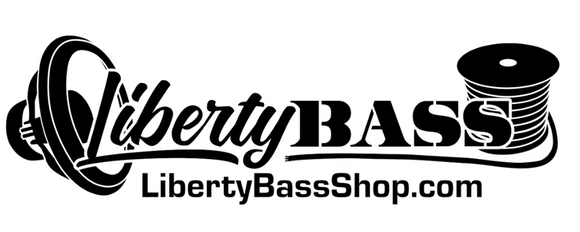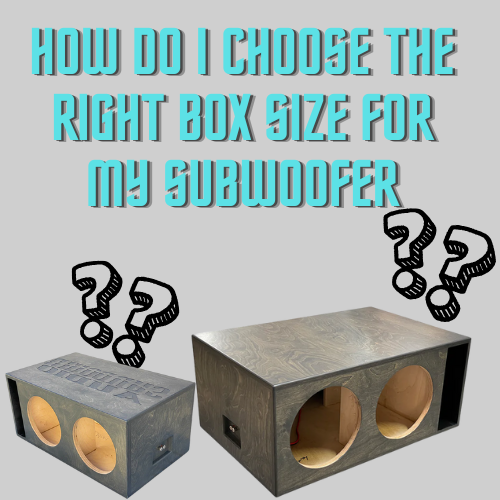How to Choose the Right Box Size for Your Subwoofer
Picking the perfect subwoofer box isn’t just about looks — it’s one of the most important factors in how your system sounds and performs. The size and design of your enclosure directly affect output, accuracy, and low-end response. In this guide, we’ll break down how to choose the right box size for your subwoofer and make sure you’re getting the most from your investment.
Why Box Size Matters
The box size determines how your subwoofer moves air and reproduces bass frequencies. Too small of an enclosure can choke your sub’s performance, while too large of one can cause it to lose control and sound sloppy. Getting the size right ensures your subwoofer performs within its designed specifications — giving you tight, clean, and powerful bass.
1. Start With the Manufacturer’s Recommended Volume
Every subwoofer has an ideal enclosure volume range, usually listed in cubic feet (ft³). You can find this information on the product page or spec sheet. For example, a Sundown Audio SA-12 might call for a 1.75–2.0 ft³ ported box, while a Down4Sound DBz 12" could prefer something around 2.25 ft³.
Following these specs is the best starting point because the manufacturer has already tested and tuned the subwoofer for those parameters.
2. Decide Between Ported or Sealed
Sealed boxes are compact and produce tight, accurate bass — great for sound quality and musical clarity. Ported boxes, on the other hand, are larger but deliver more output and deeper low-end response. If you’re chasing SPL (sound pressure level) or want your system to “hit harder,” ported is typically the way to go.
3. Consider Your Space and Vehicle Type
It’s important to make sure the box you build or buy actually fits your vehicle. Measure your trunk, hatch, or truck cab before deciding on a design. If you’re limited on space, consider slim subwoofers or custom-fit enclosures that are optimized for smaller vehicles.
4. Match the Box to the Subwoofer’s Tuning
Ported boxes need to be tuned to the correct frequency, often between 32Hz–36Hz for daily driving setups. A box tuned too high can sound boomy, while too low can cause loss of midbass response. Using a properly tuned enclosure helps balance loudness with accuracy.
5. Avoid “Universal Fit” Boxes
Pre-fab or “universal” boxes often look convenient, but they rarely match your subwoofer’s true performance needs. If you want maximum output and reliability, invest in a custom-built enclosure made to your sub’s specs. It’s the single biggest upgrade you can make for better bass.
Trust LibertyBassShop.com for Subwoofers and Custom Enclosures
At LibertyBassShop.com, we offer subwoofers and enclosures designed for precision, power, and performance. From Sundown Audio and DC Audio to Down4Sound and Basshead Supply custom boxes, every product is tested for quality and built to perform the way it should.
Whether you need a single 12" ported enclosure tuned to 33Hz or a dual 15" setup for competition use, our team ensures the box matches your sub’s exact specifications for the best results possible.
Final Thoughts
Choosing the right box size for your subwoofer is key to unlocking its full potential. Always check your sub’s recommended airspace, decide between sealed or ported, and trust the specs from proven brands. When in doubt, go custom — and always choose an authorized dealer who knows the gear inside and out.
Visit LibertyBassShop.com today to find your next subwoofer, amplifier, or custom-built enclosure designed for the perfect fit and incredible bass response.
Liberty Bass Shop — Your #1 Source for Trusted Car Audio Equipment.

